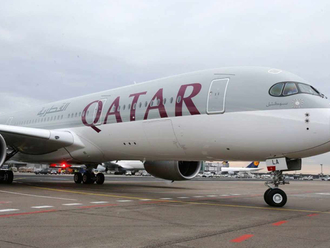Dubai/Doha: When is $300 billion not enough? That question is key to Qatar’s future as some bankers and hedge funds speculate the state’s financial reserves may not be liquid enough to defend its currency in the long term.
Central bank governor Shaikh Abdullah Bin Saud Al Thani said last week that Doha could employ about $340 billion (Dh1.24 trillion) of reserves: some $40 billion plus gold at the central bank, and $300 billion at the Qatar Investment Authority, the sovereign wealth fund. The issue is that it might only be able to use a fraction of its reserves to defend its currency.
Some are domestic assets which could be hard to sell to foreign buyers in crisis conditions, while another portion is tied up in “illiquid” foreign assets that could not be sold quickly to raise cash.
The portion in foreign bank accounts, tradable bonds or listed equities that could be liquidated quickly and easily if needed, is a state secret — and that secrecy is fuelling speculation about Qatar’s real financial strength.
A source close to the government said fewer than a dozen people had access to all details of the QIA’s reserves.
The QIA did not respond to a request for comment.
“There is basically no information. There is a lot which is hard to sell, either because of size, strategic interest or depressed values,” the source said.
Liquid
The central bank’s net international reserves including gold totalled 126.7 billion riyals ($35 billion) at end-May, official data shows. Shaikh Abdullah said under $6 billion left Qatar in the past month; this implies the reserves could now be near $30 billion.
Economic theory suggests maintaining the riyal’s peg to the dollar would require central bank reserves equivalent to Qatar’s monetary base — $17 billion. So the central bank may have some $13 billion to play with.
That implies the QIA may need to liquidate a small fraction of its assets fairly soon to rebuild central bank reserves.
The question for financial markets is how much of that sum is liquid and how much is in long-term assets such as London’s Harrods department store and a stake, bought for $622 million, in the owner of New York’s Empire State Building.
QIA stakes in big, listed Western firms, such as a roughly 15 per cent holding in Volkswagen, may be partially liquid; they could easily be trimmed by sales into the stock market, but divesting them completely without driving down stock prices could take many months.
But there are some reasons to think the QIA, with its appetite for foreign trophy assets, may be less liquid than other sovereign funds.
US Treasury data shows Qatar’s holdings of long-term US securities such as Treasury bonds at $8.6 billion in April, or under 3 per cent of QIA assets. Kuwait’s holdings were $203 billion, or 39 per cent of its sovereign fund’s estimated size, and Saudi Arabia’s at $155 billion or 30 per cent.
The data may understate Qatari investment in liquid US securities if some is routed through offshore centres such as the Cayman Islands.
But the uncertainty suggests Qatar’s financial ammunition may not be as plentiful as it appears, argue some hedge fund managers in New York and London, who could gain from market volatility if Qatar’s currency does come under pressure.
“Let’s assume 20 to 30 per cent of the QIA’s foreign assets are liquid — that brings liquid assets down to $50-75 billion.
All of a sudden, Qatar’s capacity to defend the peg isn’t that strong anymore,” said a manager in New York.










